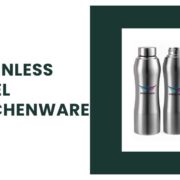
Today’s business world thrives on reuse, reduction, and recycling principles. Companies live up to this motto by saving all types of related costs.
Asset recovery is the process of reclaiming, reusing, or reselling unused assets within a business. These assets include physical items like machines, equipment, IT hardware, or intangible assets.
The primary goal of asset recovery is to enhance the value of your assets rather than throwing them out. It saves your company’s investment and reduces overall operating costs.
By disposing of assets responsibly, your company can minimize potential legal and environmental liabilities. This recovery option aligns with sustainability goals by reducing waste and promoting a circular economy.
Let’s discuss how this recovery can drive profitability in today’s business world.
The General Concept of Asset Recovery
Asset recovery is a well-organized process that focuses on rebuilding the value of unsuspecting and obsolete assets inside a business. These assets can range from office furniture, IT equipment, industrial machinery, vehicles, and intellectual property. Instead of letting these assets sit inactive, reduce their value, or be thrown out as waste, this recovery method finds ways to reuse and resell them to extract maximum financial and operational value.
This concept is based on efficiency and sustainability. Your company can invest significant resources in acquiring different assets, but several assets lost their use case over time due to tech advancements and changes in market demand.
Businesses risk losing their investment entirely without a structured approach to managing these assets after fulfilling their primary purpose. This is where asset recovery comes into play.
Key Elements of Asset Recovery
The general concept of this recovery mechanism revolves around several crucial elements that help your company recover value from its assets:
- Identification of Surplus or Obsolete Assets
The first step in asset retrieval is identifying which assets are no longer needed or useful in their current state. This process involves physical assets like computers, machinery, and office furniture and non-physical assets such as intellectual property or software licenses. Proper asset tracking through inventory management systems ensures that your company can effectively assess what is available for recovery.
- Evaluation of Asset Value
Once the assets are identified, the next step is evaluating their residual value. It includes determining their condition and potential resale value and assessing if they can be repurposed, refurbished, or recycled. This evaluation helps your company understand the potential financial returns from asset retrieval efforts.
- Maximizing Residual Value
The core goal of asset retrieval is to enhance the value extracted from assets that would otherwise depreciate or incur storage costs. This can be achieved by selecting each asset’s most appropriate disposal or redeployment method. It ensures the highest possible return.
Types of Asset Recovery
There are various asset retrieval and recovery methods. Each type provides unique opportunities for your company to reclaim its value.
- Resale and Remarketing
This is one of the most common types of asset retrieval in which your business can sell their assets to third parties. It is an effective way to recover some initial investment made in assets. This process also includes refurbishing or reconditioning assets to enhance their resale value.
- Recycling
Recycling provides an environmentally friendly option to recover your asset value in case your device can’t be resold or reused. For example, components of electronic devices or metal from machinery and other materials can be easily recycled or sold easily.
- Reallocation or Redeployment
In this type, companies can redeploy their assets to other parts of the business instead of selling them. This way they can optimize costs and use tools or equipment exactly where they are needed. This practice minimizes the need to purchase new assets and enhances resource utilization.
- Lease Returns and End-of-Life Management
Some businesses’ effective useful lives, effective lease return management, and disposal of end-of-life assets ensure that the company incurs fewer costs and maximizes recovery th when these assets reach the end of their useful life through strategic disposal.
Key Benefits of Asset Recovery for Profitability
- Generates Additional Revenue Streams: Reselling or repurposing surplus or obsolete assets provides companies with a new source of income.
- Reduces operational costs: Companies lower procurement and storage costs by recovering assets instead of purchasing new ones.
- Improves Cash Flow: Asset retrieval quickly converts unused assets into liquid cash, enhancing short-term liquidity.
- Minimizes Waste and Disposal Costs: Reusing or recycling assets reduces the expenses associated with waste management and disposal fees.
- Enhances Sustainability Efforts: Recycling and repurposing assets support environmental goals and contribute to a business’s green initiatives and corporate social responsibility (CSR).
- Maximizes Return on Investment (ROI): Asset retrieval extends the useful life of investments, ensuring businesses get the most out of their initial expenditure.
- Boosts Brand Image: A sustainable approach to asset retrieval can enhance a company’s reputation with stakeholders and customers.
- Ensures Regulatory Compliance: Proper disposal or recovery of assets helps businesses meet legal and environmental regulations, avoiding fines and penalties.
- Supports Efficient Inventory Management: By removing obsolete assets, businesses can optimize space and reduce the costs of storing non-essential items.
- Promotes a Circular Economy: This recovery mechanism encourages the reuse of materials and products, reducing the need for new manufacturing and resource extraction.
Best Practices for Implementing an Effective Asset Recovery Strategy
Your company must adopt best practices that ensure efficiency and value maximization to fully realize the profitability benefits of asset recovery. Some key steps include:
- Accurate Asset Tracking and Inventory Management: A comprehensive understanding of a business’s assets, where they are located, and their condition is essential. Digital tools like asset management software can help track the assets’ life cycle and identify recovery opportunities.
- Partnering with Experts: Working with asset recovery experts or third-party vendors who specialize in specific types of recovery, such as electronics recycling or surplus inventory sales, can enhance the value extracted from assets.
Conclusion
Asset recovery is more than just a cost-saving measure. It is a strategic driver of profitability in today’s business world. Your companies can generate additional revenue streams by effectively managing surplus, obsolete, or end-of-life assets, reducing costs, enhancing sustainability, and staying compliant with regulations.
With the rise of digital platforms and the focus on sustainability, asset recovery is becoming an essential part of modern business operations. If your company embraces these trends and implements strong recovery strategies, it will reduce waste and significantly boost its efficiency.











